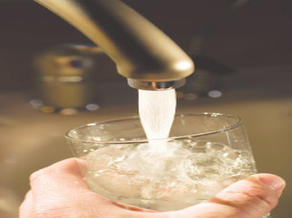Although still in Stage 1 water rationing, the impact of hundreds of thousands of visitors during the summer has brought the Middle Ranch reservoir down to 600-acre feet and the Avalon city council learned that Edison plans to refocus on conservation efforts.
Executives associated with Southern California Edison appeared at Tuesday’s council meeting to answer questions related to the ongoing drought and to discuss proposed funding for new desalination projects.
Frank Beach, Edison’s new utility services manager said he was very much looking forward to “serving Avalon residents.” The council also heard from Grants Project Manager Luke Shaner, who answered questions about proposed funding and the overall water situation in Catalina.
He told the Council that the last time the Middle Ranch Reservoir was at 100 percent was 2011.
Shaner said Middle Ranch Reservoir was at the 600-acre-foot level, and that some projections show that without rain, the reservoir could be down to the 300-acre foot level by peak season of 2020. The projections consider an annual reservoir drawdown of 160 acre feet and desalination production of 190 acre feet per year during Stage 1.
He told the Council that Edison was exploring other alternatives while the utility waits on federal and state officials to decide on potential grant funding, , including deep water wells. Edison will make a concerted effort to focus on the “severity” of the water situation as they “push more projects forward,” he said.
Although one resident at the meeting asked for weekly reservoir updates, Shaner said they provide once a month updates, which he said should be sufficient. If things change dramatically, he said, they will provide periodic updates as necessary.
Going forward, Shaner said “the importance of water conservation by the community and visitors cannot be overstated,” even with higher desal production.
Beach said while he was new to Avalon, he was “not new to the drought or conservation” as he reviewed the mandatory conservation rules for Avalon. “It’s a sign of the times for California,” he said as the drought continues across the state.
Among the rules, he reminded the council, are;
• No use of potable water that results in flooding, runoff or overspray.
• No individual private washing of cars, boats, or aircraft with a hose except with the use of positive action shut-off valve or three-gallon bucket.
• No use of potable water for washing buildings or other hard surfaced areas, except in the cases where health and safety are at risk.
• No use of potable water for construction purposes.
• No use of potable water for filling/refilling swimming pools, spas, hot tubs, and fountains, unless used for recirculation or equipped with a specifically designed cover in good working condition when not in use.
• The use of fresh water from hydrants for any other purpose other than fire suppression is prohibited.
• Restaurants are not allowed to serve potable water unless requested by patrons.
• Hotels are required to give guests an option not to have their linens laundered.
• No use of potable water to irrigate ornamental turf on public medians.
• No use of potable water to irrigate outdoor landscapes during and within 48 hours of measurable rainfall.
• No use of potable water to irrigate plants by means other than drip irrigation, hand watering without hose nozzle, or by use of a container not exceeding a three-gallon capacity.
• Watering shall be limited to the hours of 7-9 a.m. and 5-7 p.m. during Pacific Daylight time.
Although these rules are not new to Catalina, Beach said what is new is Edison “doing some patrolling” and tighter enforcement of those rules.
“We are ramping up,” said Beach. “We are trying to be more visible for these conservation measures,” he said, letting everybody know conservation is very important.”
The Council thanked Edison for their conservation efforts and said they would cooperate with signage and other conservation efforts.










